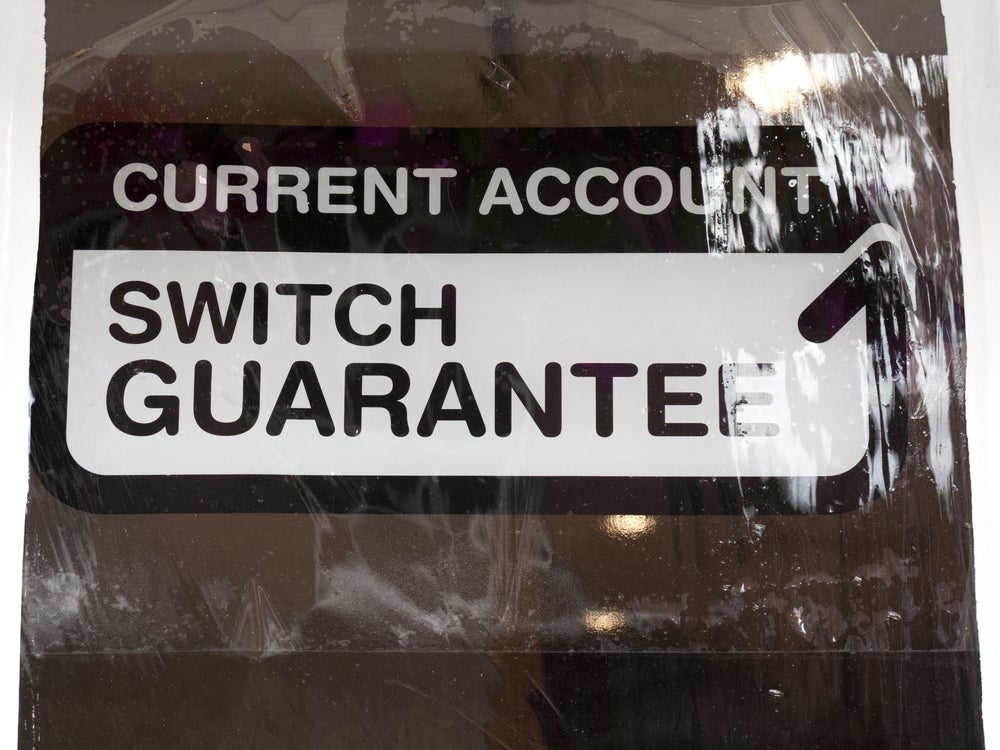Lee Cameron has one of the toughest jobs in fintech. Soaring losses, impairments, declining revenues and repeatedly missed targets have all combined to weaken market confidence in Monitise, the onetime darling of the UK fintech sector. As he tells Douglas Blakey, the market will not tolerate any more failure
Monitise CEO Lee Cameron does a good line in understatement. He tells RBI: “Everyone is holding their breath a bit.”
Few technology vendors have endured such a rollercoaster ride as Monitise. And Lee Cameron, the firm’s third CEO in a year, has been with the firm since day one.
“I was part of the founding management team when we had no customers, no revenue and no employees. I have seen it all the way through.”
Appointed as CEO last September, Cameron inherited something of a hospital pass in business terms from his predecessor who spent only six months in the role.
Losses quadrupled in the six months to end December 2015; impairments soared as the firm wrote off £167m ($235m) while sales fell to £33m from £42m in the year ago period.
How well do you really know your competitors?
Access the most comprehensive Company Profiles on the market, powered by GlobalData. Save hours of research. Gain competitive edge.

Thank you!
Your download email will arrive shortly
Not ready to buy yet? Download a free sample
We are confident about the unique quality of our Company Profiles. However, we want you to make the most beneficial decision for your business, so we offer a free sample that you can download by submitting the below form
By GlobalDataMarket confidence dried up after a number of targets were set and missed with depressing predictability; the share price fell by 97% from a peak of 80p to less than 2p by the end of 2015.
And amid all the management upheaval and negative press coverage, the firm was burning through its cash pile at an alarming rate.
Candid Cameron
As for what went wrong, Cameron does not pull his punches.
“We projected a vision and an ambition that was so enormous that we were over-stretched. We opened offices everywhere and saw the opportunity for a digital financial services land grab,” he says.
“For a little UK AIM-listed company, we were too ambitious and we did over-stretch and we have taken a long time to pivot and transition the business.
“We grew so rapidly but did not have the substance to support it. We have missed targets and repairing the consequences has been very public. We now accept that we are not going to own digital financial services.”
Nor, says Cameron, will the firm embark on another strategic review or seek a sale of the business.
A strategic review of the business in early 2015 resulted in some major players kicking the tyres of Monitise ahead of a possible sale; no deal resulted.
“We spoke to a number of organisations in our space but if it has anything to do with us, we will stay as an independent company,” says Cameron.
The Cameron turnaround plan incorporates drastic cost-cutting; headcount has almost halved.
He says: “We have taken out the cost centrally and prioritised customer facing roles. We had too much corporate stuff that was not supporting customer engagement or generating revenue – that has been taken out of the business.”
Cameron’s plan also incorporates accelerating a change in strategy away from charging licence fees to banks.
Instead, Monitise is banking on a single cloud platform with the aim of deriving more consistent revenues from subscriptions as well as new business partnerships, such as a major deal with IBM.
Historically, the Monitise business model involved the firm selling its proprietary software to its bank clients and charging a licence fee, plus professional services fees, for the implementation and localisation work around that and to provide ongoing support and maintenance.
That strategy, says Cameron, worked ‘extremely well’ for a few years.
And then in March 2014, Monitise raised fresh capital of £100m to build what it terms its MCP or Monitise Central Platform.
“We wanted to move away from charging a licence fee and charge banks transaction fees when their customer uses the service.
Sell FINkit
Looking ahead, the future of Monitise – if it is to have a future as an independent outfit – can be summarised in two words: sell FINkit.
Cameron does not quite admit that the success or otherwise of FINkit will determine the future of the firm but he comes close.
“Whether we are super successful or just go down in history as another UK fintech company that did OK will depend on how successful we are with FINkit,” he explains
The new FINkit offering is designed to provide a compliant framework within which banks can compose and package their services in conjunction with other third party services.
FINkit features prebuilt component architecture and is built in such a way that can ingest APIs from fintechs and from the banks themselves.
Adds Cameron: “A lot of banks tell us that they have in-house innovation they want to commercialise and bring to market.
“Co-opetition may be a terrible word but it does exist. We can be the platform to enable the mixing and matching.
“So when we go and pitch to banks it is not just a pitch to push more to the self-service channel to lower costs.
“It is to look at the revenue side of balance sheet; we can now deliver to banks lots of services- some they might want to build themselves, some we will build for the bank and some they may want from a fintech but cannot get them into their systems because they will not satisfy their security guys.
“Other organisations are coming over the top and inserting themselves into the supply chain. It may not matter to the banks today because are enormous and successful at what they do but if they allow other people to get access to their customers’ spending behaviour and their transaction data it will over time mean that the bank loses its ability to own and be the custodian of these services of value to their customers.
“So my message to the banks is to let them leverage us and you can launch those services to your customer to drive additional revenues – and more importantly you are defending your role with your customers.”
Cameron is adamant that the firm is now stabilised, focused, moving towards profitability, adequately funded with tight management controls in place, transparent and accountable.
He faces no easy task. Monitise’s half-yearly costs for the six months to end December 2015 were £53m; it is targeting a reduction in costs of £3m per month to end June, bringing total costs to around £35m.
Revenue in the last six months was approximately £33.4m and is expected to be broadly similar in the six months to end June.
Such figures stress just how important it is for Cameron’s sales guys to get new deals on board for FINkit.
“We are out pitching every day. A number of our competitors have disappeared or been acquired. Often, the competitor is the banks themselves via their in-house teams.
“But just look at the in-house history. When we turn up and tell a bank what we can do for them, we may meet with some resistance as the bankers say ‘well, our own internal team can do it better, faster, cheaper.’
“It is so often not the case. The internal team has to deal with legacy change at the back end and so often do not have the time or resource to focus on innovation at the front end which is where we help.”
Are there deals in the offing that might improve City sentiment towards Monitise?
“More than one – before 30 June,” concludes Cameron.
Monitise Timeline
- 2003: Monitise founded by Alastair Lukies
- 2006: Monitise signs up first major client: HSBC subsidiary first direct;
- 2007: Monitise lists on London’s AIM;
- 2009: Visa Inc takes a 15% stake in Monitise (subsequently diluted to 5.5% by capital raisings)
- 2013: Market capitalisation of Monitise hits £900m
- 10 January 2014: Monitise share price peaks at 81p
- January 2014: UK Prime Minister David Cameron appoints Alastair Lukies as Business Ambassador;
- 6 June 2014: Elizabeth Buse, a 16 year veteran senior executive at Visa Inc appointed co-CEO of Monitise
- 13 June 2014: Alastair Lukies recognised in Queen’s Birthday Honours List – appointed CBE;
- 26 June 2014: Monitise acquires Markco Media Limited in all all-share deal worth up to £55m, the parent company of MyVoucherCodes.co.uk;
- 8 July 2014: Monitise issues second profit warning in four months; warns it will miss sales targets; share price falls 8.6% to 45p; says it remains on target to break even in 2016 and “increased confidence” in hitting its target of 200m users by mid-2018;
- August 2014: Alastair Lukies appointed non-executive chairman of FinTech industry body, Innovate Finance at its launch;
- 15 September 2014: Monitise posts loss for year to end June 2014 of £31.4m; shares decline by 4% to 44p; Visa, the firm’s fourth-largest shareholder says it is considering selling its stake in Monitise; appoints JP Morgan to advise on its options;
- 10 October 2014: Monitise attracts negative press and analyst comment following reports of Lukies total pay package. For the year to June 2014 it rose to £1.17m from £616,000 the prior year; Lee Cameron, head of sales is awarded a 40% pay rise from £473,000 to £677,000 for the year to June 2014;
- 27 November 2014: Monitise raises £49.2m from share issue; share price rises 12% to 34p;
- 2014: Management Today names Monitise The UK’s Least Admired Company, ranking 247th out of 247 firms surveyed by Leeds Business School;
- 22 January 2015: Monitise issues another profit warning; discloses it holds gross cash of £129m; hires Moelis & Co to conduct a strategic review of the company;
- 23 January 2015: Monitise reportedly receives “a number of expressions of interest”, with potential transactions including a merger with a third party or outright sale of the business
- 16 February 2015: Sky News links FIS with a possible bid for Monitise;
- 17 February 2015: Monitise reports loss of £30.8m for six months to end Dec 2014 up from loss of £10.2m in corresponding period the prior year; blames switch in 2014 to a subscription model from one based on licences; press reports link a number of potential suitors with Monitise including Visa, MasterCard, Fiserv, TCF, IBM and Temenos
- 25 March 2015: Monitise ends sales process; Founder and co-CEO Alastair Lukies steps down; hands over full executive control to Elizabeth Buse; accelerates cost-cutting programme; share price falls 22%
- 6 July 2015: Monitise CEO Elizabeth Buse said revenues will be lower than previously forecast due to a “difficult year”.
- 28 July 2015: Lukies accompanies PM David Cameron on a UK trade mission to Indonesia, Singapore, Vietnam and Malaysia to promote the UK fintech sector
- 9 September 2015: CEO Elizabeth Buse resigns for ‘personal reasons’ after little more than a year in post; Monitise share price collapses 29% to a six year low; Lee Cameron, deputy CEO takes over;
- 1 December 2015: Finance Director Brad Petzer resigns
- 31 December 2015: Monitise share price ends the year below 2p
- 12 February 2016: Monitise posts loss of £20.2m for six months to end December 2015; writes off £167m from value of its business; cash balance has declined to £53.4m from £88.8m six months at end June 2015;
- 4 March 2016: Monitise reportedly in talks to dispose of content business unit, Markco Media including MyVoucherCoes.co.uk; Monitise share price surges by almost 50% to a three-month-high of 3.2p







